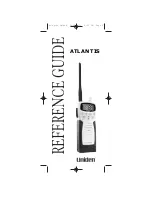
______________________________________________
HARRIS
888-9058-001
WARNING: Disconnect and lockout AC primary power prior to servicing
204
j.
Check to see that all bias pots of the quarter module have been
turned fully counter-clockwise before applying any power.
Refer to the section on Idle Current Testing to set bias controls
WARNING:
RF TRANSISTORS, ISOLATION RESISTORS, AND INPUT ATTENUATORS CONTAIN
BERYLLIUM OXIDE (BEO) CERAMIC, A HAZARDOUS MATERIAL. THE LIDS ARE
MADE FROM AL2O3 AND ARE HARMLESS. THE BEO IS HARMLESS WHILE INTACT,
BUT THE DUST IS TOXIC. AVOID CRUSHING OR BREAKING THE BEO CERAMIC,
AND DISPOSE OF FAILED DEVICES PROPERLY.
8.4.4 Testing and Replacing Isolation Resistors
In order to test ISO resistors, it is necessary to desolder one of the leads before testing
the resistor with an ohmmeter.
When replacing a flange-mounted ISO resistor, bend the resistor leads curving upward
slightly to provide mechanical strain relief to allow for differing expansion between the
circuit board and the heat sink. Be sure to clean away the old thermal compound from
the heat sink surface, and apply just enough compound to the flange of the new device
in order to assure a good thermal interface. After applying reasonable torque to the
flange screws, solder the leads quickly using a hot iron.
8.4.5 Pass FET Replacement
If pass FET replacement is necessary, replace both FETs with the matching parts. If this
is not done there may be a tendency for one FET to carry more of the current and lead to
a repeated failure.
When pass FETs are replaced, change Q1 and R72 on the Module Control Board, and
change the 5.6 ohm resistors and the zener diode on the pass FET bus bar assembly.
These parts are typically stressed in the event of pass FET failure and replacing them
will promote long term reliability.
Use the same ESD procedures outlined in the section on RF FET replacement. The FET
drains are insulated from the chassis with SIL-PADS, silicon insulating pads that need
no heat sink compound.
Before enabling the module, check to see that the drains are not shorted to the chassis
using an ohmmeter.
















































